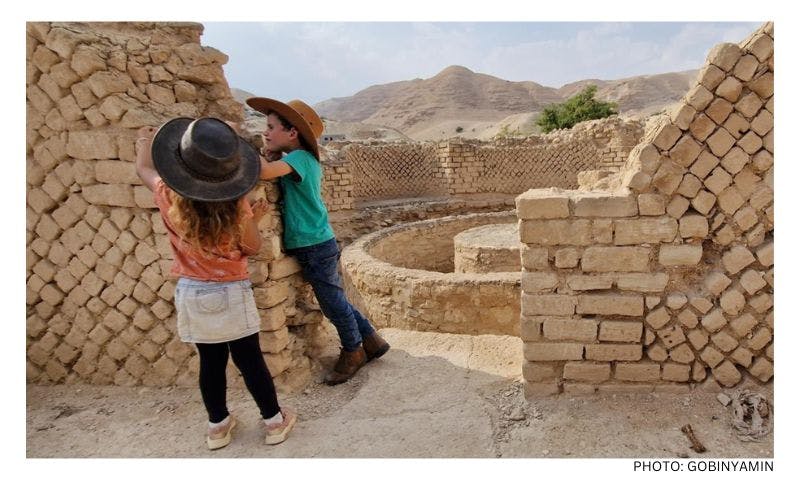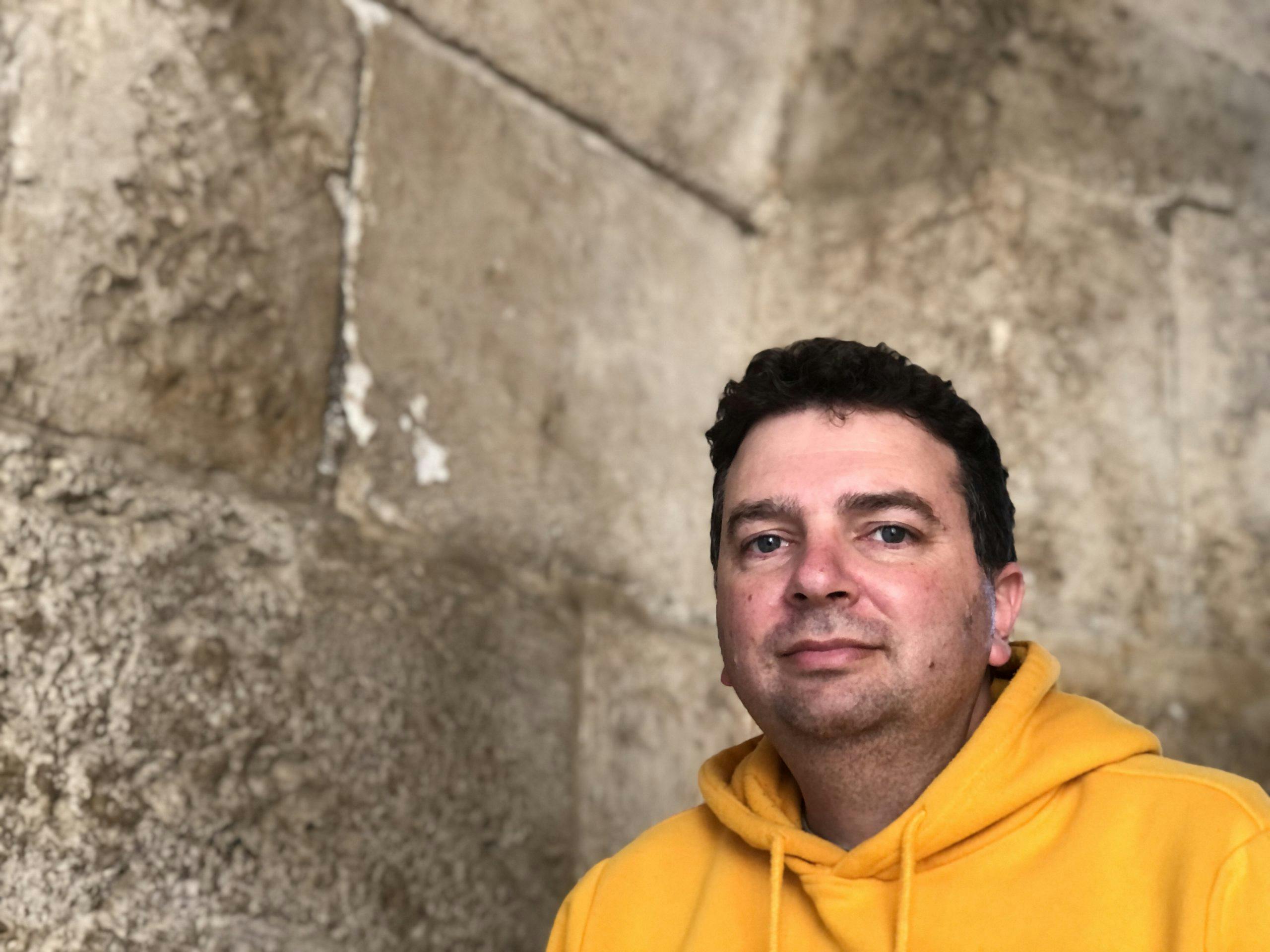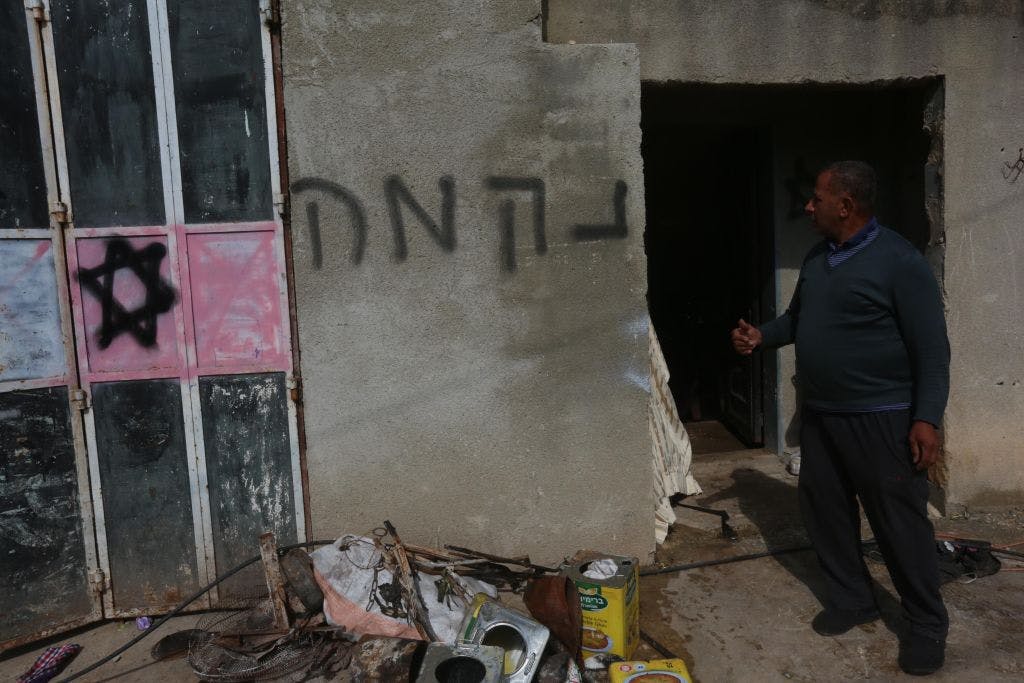Published: 11 August 2023
Last updated: 5 March 2024
The government says it wants to boost tourism; critics claim it’s creating new settlements under the guise of archaeology.
The Netanyahu government has approved a plan to greatly expand Israel’s archaeological reach across the West Bank. The Palestinian Authority and left-wing Israeli activists view it as a major step towards annexation of the occupied territory.
“It’s really not about restoration,” Ghassan Daghlas, a PA official who monitors settlement in the northern West Bank told The Jewish Independent. “It means bringing in security, the army, settlers and confiscating land. The archaeological plan is part of an overall plan to Judaize all of the West Bank.”
Echoing longstanding settler allegations, which critics claim are unsubstantiated, that the Palestinian Authority is deliberately destroying antiquity sites to erase the Jewish past, the plan is being presented as an “emergency” step to halt this. But its budget tells a different story.
As the dovish Israeli archaeological group Emek Shaveh points out, the lion’s share of the plan’s 120 million shekels ($A50m) in allocations for the coming three years is earmarked for tourism development and infrastructure as well as educational programs. Emek Shaveh director Alon Arad says the idea is to create new settlements in the form of archaeological tourist attractions.
“Instead of having five, ten or a hundred families, you can have a hundred thousand tourists come,” he says, adding that the model for this is the hugely popular City of David archaeological tourist site in occupied East Jerusalem. In so doing, the government can win over more Israelis to the settler narrative and “normalise the occupation,” Arad adds.
Heritage Minister Amihai Eliyahu, from the anti-Arab Jewish Power party, indicated that the significance of the plan cannot be overestimated, labelling its approval last Monday as “magnificent tidings for Zionism and settlement”.
But the sense that, in addition to contravening international law, the plan may portend a major violation of the Oslo self-rule agreement with the Palestinians is being accentuated by a lack of clarity on whether or not the plan applies to parts of the West Bank known as area B. That is territory where the PA is supposed to control civil affairs, including archaeology.

Israel recently conducted its first excavation in area B, an operation guarded by IDF troops. As photographs published in Haaretz showed, trucks hauled vast amounts of earth extracted from Mount Ebal near Nablus and deposited them in the Shavei Shomron settlement, where settler leaders established a tourist project and invited children to sift for relics. Israeli officials responsible for West Bank affairs did not respond to a query by The Jewish Independent Media about this.
According to the plan, four to seven sites are to be designated as “anchors” where major tourism development will take place. But Eliyahu’s spokesman, Omer Avital, said the “anchor” sites have not been chosen yet nor has a decision been taken on whether Mount Ebal would be part of the plan. The plan allocates 20 million shekels ($A8.2m) for a site near Jericho termed the Hasmoneans’ Palace to be developed into a tourism centre, including with a new access road.
The plan’s backers seem to view it as giving Israel a mechanism for taking over territory all over the West Bank. “The decision puts into focus thousands of heritage sites that are declared as Jewish and Zionist,” Avital said.
All of this fits into the picture of a future dominated by Jewish supremacism. It comes as the most right-wing government in Israel's history fast tracks settlement construction and facilitates further proliferation of wildcat outposts throughout the West Bank while settler assaults on Palestinian villages, some in revenge for Palestinian attacks, continue unchecked.
The settler violence has caused three herding communities to flee their lands in the rural West Bank in recent months, according to B’tselem, the Israeli human rights group. The government has a plan calling for half a million more Jews to be settled in the West Bank and is building roads and other infrastructure for this.
"Tel Aroma has important Jewish history but they have shaved off the top of the site and put a Palestinian flag there. The Palestinian Authority is erasing history."
Adi Shragai, from Guardians of Eternity
By using archaeology, the government also seems bent on constructing a history to legitimise annexation. “The government has decided history is important and needs to be safeguarded,” said Adi Shragai, whose Guardians of Eternity organisation played a key role in formulating the plan.
She told The Jewish Independent Media that much of the motivation behind the plan is to reach Israelis who are not settlers. “I hope this will cause someone from Tel Aviv or Dimona to come to the sites. This is history in Judea and Samaria, the history of all of us.”
Shragai said that while it is still unclear whether the plan will apply to Area B, “our position is that this is an obligation. If the state decided that history is important, it must be important also in Area B.”
One site in Area B she would like Israel to seize is known to the settlers as Tel Aroma, near the town of Beita, on whose land messianic settlers and the Israel Defence Force have implanted the Evyatar settlement during the past two years. The settlement has come at a heavy price in dead and wounded Palestinians.
“Tel Aroma has important Jewish history but they have shaved off the top of the site and put a Palestinian flag there,” she said. “The Palestinian Authority is erasing history.”
Arad, the Emek Shaveh director, views things differently. “The idea that the PA encourages destruction of antiquity sites is a lie promoted by settler organisations that have failed to present any data supporting their claims. What we are talking about here is a political decision to promote more violations of international law, damage to the Palestinian community and more annexation.”
“This is the use of archaeological for zoning purposes,” he continued. “With approximately 6000 sites in the West Bank you can immediately influence any location in the West Bank under the heading of safeguarding heritage.”
In addition to being backed by Jewish Power leader Itamar Ben-Gvir, who campaigned on a promise to expel “disloyal” Arabs and left-wing Jews from Israel, the drive to dig in what settlers view as biblically endowed territory is strongly backed by Bezalel Smotrich, leader of the Religious Zionism party and also Tourism Minister Haim Katz from Netanyahu’s Likud. Even the Israeli Foreign Ministry is helping to fund the thinly veiled grab of territory and what lies under it.
In the view of Wael Hamamreh, a senior official in the Palestinian Ministry of Tourism and an antiquities archaeologist, the plan’s passage shows “they want to take Palestinian cultural heritage and seize Palestinian archaeological sites and land”.
Hamamreh noted that according to international law, the occupying power is banned from undertaking any excavations that are not salvage excavations. Of the Mount Ebal excavation, he said: “This was theft of objects in an area under our control. Why make an excavation that is illegal according to all international conventions? Why create a new history? Why fabricate history? Why encourage more settlers to come to the West Bank?”
RELATED STORY
UNESCO to rule on ancient Jericho as Palestinian World Heritage site (Jerusalem Post)
Jericho prides itself on being the oldest most continuously inhabited city in the world, dating back over 10,000 years and for being at the lowest point below sea level of any municipality.
Photo: Children explore the Hasmonean Palace archaeological site (GoBinyamin)




